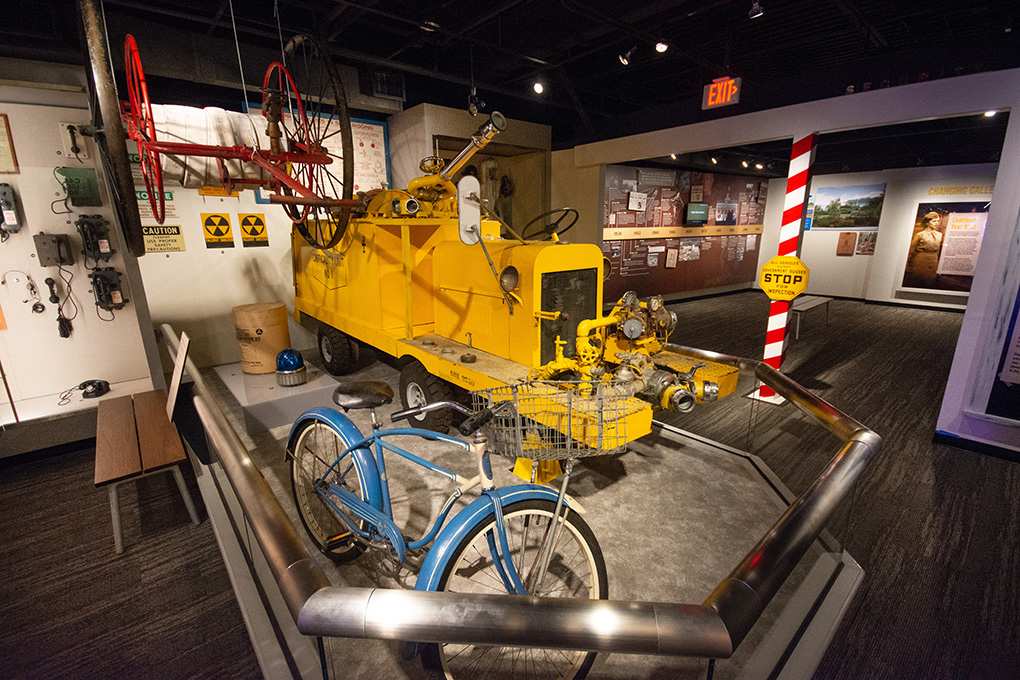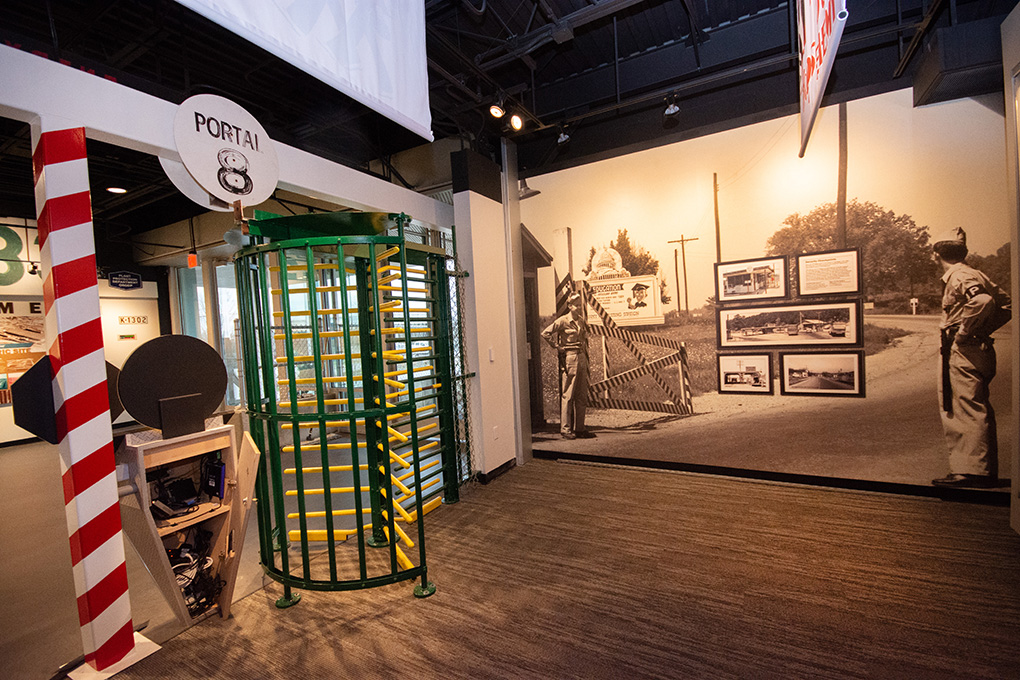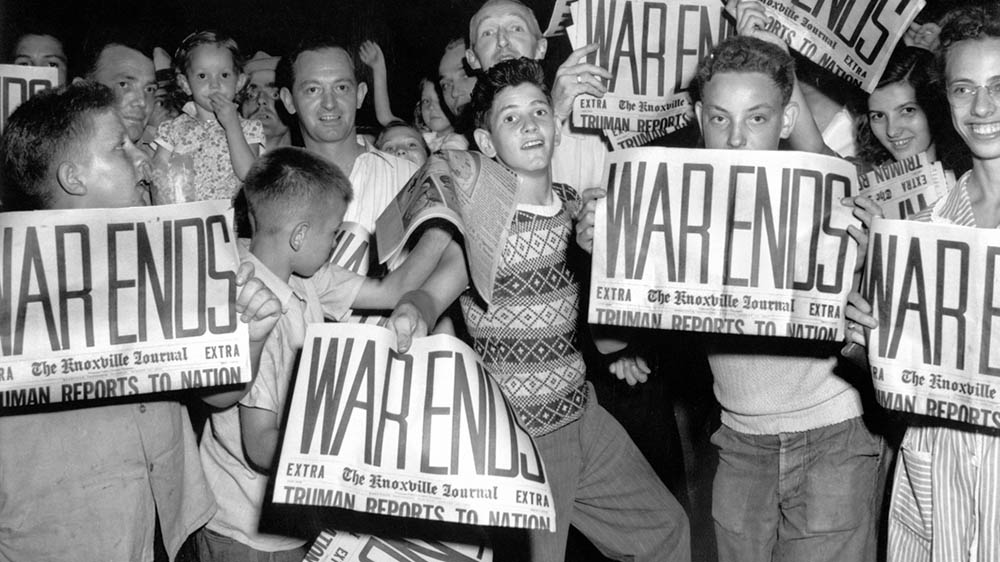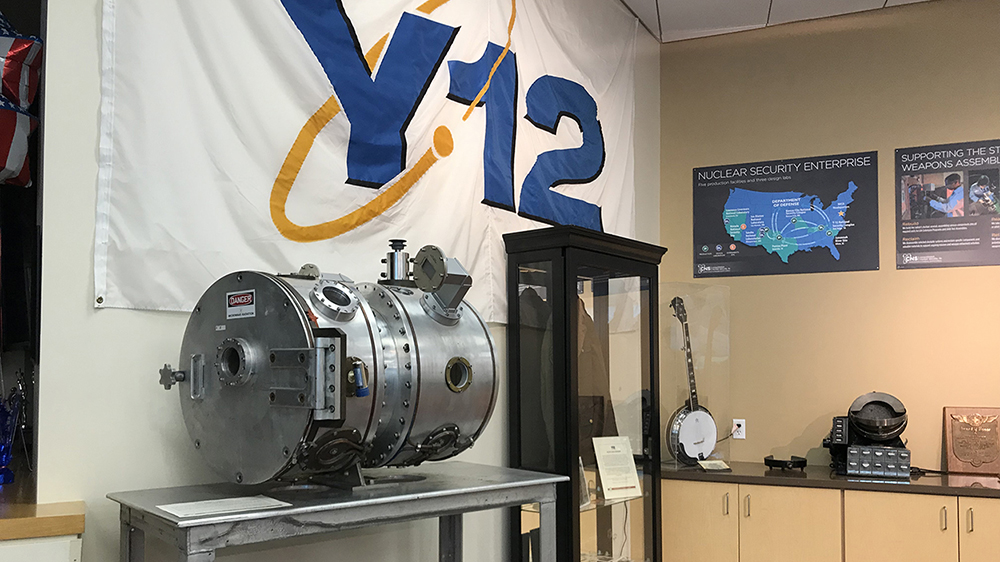ABOUT THE NEW K-25 HISTORY CENTER
The K-25 History center honors the amazing men and women who helped construct and operate the K-25 uranium enrichment complex, first as part of the Manhattan Project, and then continued to help meet our nation’s security and energy needs after the war.
At the time of its creation, most of the K-25 workers did not even know what they were building. This massive wartime effort was shrouded in complete secrecy. They were part of a team building the first atomic weapon, racing against Nazi Germany to bring an end to World War II. At the K-25 plant, a gaseous diffusion process was used to enrich uranium and ultimately create fuel for one of two atomic bombs. The K-25 facility played a major role and altered the global landscape during World War II and the Cold War. Its contributions to defense, energy, and technology advancements through the 1990s have left a historic impact.
The new 7,500 square foot history center houses more than 250 original artifacts on display, and nearly 1,000 recorded oral histories from former employees. These interactive galleries give you the opportunity to step back in time to discover the inner workings of the K-25 Plant and learn about one of the most significant industrial, scientific, and military achievements in American history.



THE MANHATTAN PROJECT:
THE RACE TO BUILD THE ATOMIC BOMB
In the early 1940s, Americans “watched” a world in chaos – as Nazi Germany and Imperial Japan invaded border after border. Despite the vow of isolationism, every citizen – from leader to laborer – pondered how long the United States could remain observers. On December 7, 1941, when the Japanese attacked Pearl Harbor, the question was answered.
Years before the attack on Pearl Harbor, government officials and the scientific community were concerned about Germany’s chemical warfare strategy. In World War I, the Germans first used poisonous gas against the French at the Battle of Ypres (1915). As World War II approached, German scientists Otto Hahn and Fritz Strassmann successfully split the uranium atom (later coined fission). Hahn had served in the German gas warfare service in the first World War. Renowned physicist, Albert Einstein, warned President Franklin Delano Roosevelt that sustained fission, also known as a nuclear chain reaction, could lead to the construction of “extremely powerful bombs.”
Innovative interactive classes to educate and inspire this and future generations through The 117 Society.
The American Museum of Science and Energy and the K-25 History Center is very excited to announce today the debut of The 117 Society. Named in honor of Oak Ridge National Laboratory’s key role in the creation of element 117, Tennessine, The 117 Society is our highest membership level, designed to provide unique access to a range of AMSE and K-25 History Center programs and resources. In turn, members of The 117 Society provide vital support to our museums.
Part of that support will fund classes being created about the Periodic Table – one directed at elementary school students, the other for high school students. Members of The 117 Society will be able to direct us to offer one of these impressive classes at a school of their choice, at no charge to that school. No matter where you live, we will work with the US based school of your choice to offer the class virtually, and we will ensure the class meets the standards of any state.
Other benefits of being a member of The 117 Society are access to special online content, exclusive events at our museums, access to our speakers, 117 Society branded merchandise, and recognition at AMSE. If desired, the member or his or her company will be acknowledged through one 30 second spot on 2 future episodes of AMSEcast, our very popular podcast.
In the spring of 2022, we will have an event at AMSE celebrating this new endeavor which we hope you will attend. In the meantime, please become an inaugural member now. Unique membership content is now in development and will become available to members this fall, and when you sign up you can reserve a spot for the school of your choice to receive our Periodic Table class starting in the fall of 2022.
Every day AMSE continues its long tradition of presenting stellar programming, exhibits and educational resources. Support of the 117 Society is vital to our ability to offer our programs and resources to our community and to the world.
To join The 117 Society, members are asked to donate $1,000 in year one, and commit to payments of $1,000 annually for the next two years. After that, to stay in the Society, members will pay $500 annually. If, after your first year in the Society you send other new members to us, your payments for years 2 and 3 will be reduced to $750 annually.
We have always appreciated the amazing support given to our museums by those in our community and beyond. What we do at AMSE and the K-25 History Center is important – as we teach about the history of Oak Ridge, the vital work done here since, and the promise of tomorrow, we are an engine of STEM education. Helping to educate and inspire this and future generations is what we are all about, and by joining The 117 Society, you give us the support we need by becoming a vital part of our team.
We appreciate your considering this opportunity, and I hope you will join – just let us know if you have any questions at americanmuseumscienceenergy@gmail.com.
Thank you very much and come see us soon at AMSE and the K-25 History Center.





